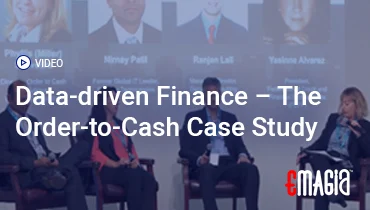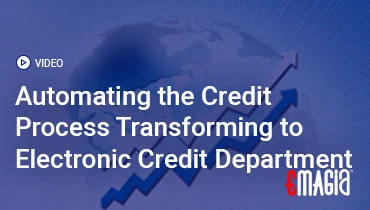In today’s dynamic business environment, extending credit to customers is a fundamental aspect of commerce. However, managing this credit effectively, from assessing risk to ensuring timely payments, is a complex endeavor. An inefficient credit process can lead to significant financial losses, strained customer relationships, and stunted growth. This is where a robust credit management system becomes indispensable.
A cutting-edge credit management system software is no longer just a luxury but a necessity for businesses aiming to optimize cash flow, minimize bad debt, and make informed lending decisions. This detailed guide will delve into the core functionalities, benefits, and transformative power of modern credit management software. We’ll explore how these systems, including sophisticated credit risk management software, are revolutionizing the way companies approach credit, ensuring financial stability and fostering sustainable growth in a competitive market.
What is a Credit Management System? Defining the Essential Financial Tool
At its core, a credit management system is a comprehensive software solution designed to automate, streamline, and optimize the entire credit-to-cash cycle within an organization. It encompasses various processes, from evaluating a customer’s creditworthiness before extending credit to monitoring payment behavior and managing collections. This integrated approach ensures a proactive and data-driven strategy for managing accounts receivable.
Beyond Spreadsheets: The Evolution of Credit Management Software
Historically, credit management often relied on manual processes, disparate spreadsheets, and subjective decisions. This approach was prone to errors, inefficiencies, and significant delays. The advent of dedicated credit management software has transformed this landscape. Modern systems provide a centralized platform for all credit-related activities, offering real-time data, advanced analytics, and automation capabilities that far surpass traditional methods. This evolution has led to more consistent, accurate, and efficient credit operations, reducing manual effort and enhancing overall financial control.
Core Components of an Integrated Credit Management Platform
A comprehensive credit management platform typically integrates several key modules to provide an end-to-end solution. These include modules for credit application and onboarding, credit risk assessment, credit limit management, credit monitoring, and credit control. Some systems also incorporate debtor management software and tools for automated credit application processing. The goal is to provide a holistic view of customer credit health and streamline every step of the credit process, from initial inquiry to final payment.
Key Functionalities of Modern Credit Management Software Solutions
Advanced credit management software solutions offer a suite of functionalities designed to empower finance and credit teams. These capabilities extend far beyond simple record-keeping, enabling strategic decision-making and operational excellence.
Automated Credit Application and Onboarding Processes
One of the initial and most critical functions is the streamlining of new customer onboarding. An automated credit application system allows businesses to collect all necessary information digitally. This includes credit references, financial statements, and legal documents. An online credit application software reduces manual data entry, accelerates the application process, and ensures data accuracy from the outset. This efficiency shortens the time from application to credit approval, allowing businesses to engage with new customers faster and more effectively.
Robust Credit Risk Analysis Software and Assessment
At the heart of any effective credit management system is its ability to assess and manage risk. Credit risk analysis software leverages vast amounts of data, including external credit bureau reports, financial statements, and historical payment behavior, to generate comprehensive risk profiles. This often involves sophisticated credit scoring models that assign a numerical score indicating a customer’s creditworthiness. For financial institutions, specialized credit risk management software for banks provides even deeper analytical capabilities to manage large and complex portfolios. These tools enable precise credit risk management solutions.
Dynamic Credit Limit Management and Policy Enforcement
Once creditworthiness is assessed, the system facilitates the setting and management of appropriate credit limits and terms. A robust credit line management feature allows businesses to define and enforce credit policies consistently. The system can automatically adjust limits based on changing risk profiles or payment performance. This ensures that businesses extend credit safely while maximizing sales opportunities. It also provides tools for the continuous review and adjustment of credit lines, aligning with an effective credit control process.
Continuous Credit Monitoring and Early Warning Systems
Effective credit management is an ongoing process, not a one-time event. A superior credit management platform offers continuous credit monitoring, tracking customer payment behavior, credit utilization, and changes in credit scores in real-time. An integrated credit management dashboard provides a centralized view of all active accounts, highlighting potential risks or opportunities. Early warning systems can flag accounts that show signs of deteriorating financial health, allowing credit managers to intervene proactively, preventing minor issues from escalating into significant bad debts. This proactive approach is a hallmark of excellent online credit management.
Streamlined Credit Control Software and Collections
When payments become overdue, a credit control software module takes over. This part of the system automates collection workflows, sending out timely reminders, overdue notices, and dunning letters. It can also manage communication logs, payment promises, and dispute resolution. Advanced credit control software packages use intelligent algorithms to prioritize collection activities based on risk and potential recovery, optimizing the efforts of the collections team. This transforms the traditional credit control process into an efficient and data-driven operation.
The Transformative Benefits of Implementing a Credit Management System
Adopting a dedicated credit management system brings a multitude of benefits, impacting a business’s financial health, operational efficiency, and strategic decision-making.
Significant Reduction in Bad Debt and DSO
Perhaps the most immediate and tangible benefit is the reduction in bad debt and Days Sales Outstanding (DSO). By accurately assessing credit risk upfront and proactively monitoring accounts, businesses can avoid extending credit to high-risk customers or intervene early when an account shows signs of distress. This proactive approach, enabled by robust credit risk management system capabilities, minimizes write-offs and ensures faster cash conversion. The result is improved liquidity and a healthier balance sheet.
Enhanced Cash Flow and Liquidity Management
Improved credit management directly translates to better cash flow. With faster credit approvals, optimized credit limits, and efficient collections, businesses experience a more predictable and consistent inflow of cash. This enhanced liquidity allows for strategic investments, reduces reliance on external financing, and provides greater financial stability. A comprehensive credit management solution is therefore a powerful tool for cash flow management, making capital more accessible for operational needs and expansion. It turns financial unpredictability into a structured advantage.
Improved Operational Efficiency and Cost Savings
Automation is a cornerstone of modern credit management system software. By automating tasks such as data gathering, credit scoring, application processing, and routine communication, businesses can significantly reduce manual effort and human error. This frees up credit and finance teams to focus on more strategic activities, such as complex risk analysis or high-value customer relationships. The resulting operational efficiency leads to substantial cost savings, as less time and fewer resources are spent on repetitive, administrative tasks. This is a key advantage of software credit management.
Better Decision-Making Through Real-Time Data and Analytics
A sophisticated credit management system provides a centralized repository of real-time credit data and powerful analytics. This allows businesses to gain deep insights into customer payment behavior, credit trends, and overall portfolio risk. Credit managers can access customizable dashboards (a true credit management dashboard) and generate detailed reports, enabling data-driven decision-making for credit approvals, limit adjustments, and collection strategies. These insights help businesses make smarter, more profitable credit decisions, ensuring a more resilient financial future through informed credit risk analytics software.
Stronger Compliance and Risk Mitigation
Navigating the complex landscape of credit regulations (e.g., GDPR, industry-specific compliance) can be challenging. A specialized credit management platform helps businesses adhere to these regulations by maintaining auditable trails of all credit decisions and communications. This reduces the risk of non-compliance, legal disputes, and reputational damage. Robust security features protect sensitive financial data, ensuring privacy and preventing fraud, making the entire credit management process more secure and reliable. Choosing a well-designed credit management application is paramount for this.
Advanced Features of Credit Risk Management Software and Beyond
Beyond the core functionalities, leading credit management system solutions incorporate advanced features that set them apart, especially in the realm of risk mitigation and proactive management.
AI-Powered Credit Risk Analytics and Predictive Scoring
The integration of Artificial Intelligence (AI) and Machine Learning (ML) is revolutionizing credit management. AI-powered credit risk analytics software can analyze vast datasets to identify subtle patterns and predict future payment behavior with remarkable accuracy. This allows for dynamic, real-time credit scoring and more precise risk assessments than ever before. AI can also facilitate prescriptive analytics, recommending optimal credit terms or collection actions for specific customers. This is the cutting edge of credit risk tools.
Integration Capabilities: Connecting Your Financial Ecosystem
A truly effective credit management system doesn’t operate in a vacuum. It seamlessly integrates with existing enterprise systems such as ERP (Enterprise Resource Planning), CRM (Customer Relationship Management), and accounting software. This ensures a unified flow of data across departments, eliminates data silos, and provides a holistic view of customer relationships. Smooth integration means that your credit management suite becomes a central hub for all financial information relevant to credit. This connectivity enhances overall efficiency and data integrity, benefiting operations from sales to finance.
Online Credit Management and Customer Self-Service Portals
Modern systems offer online credit management capabilities, often through customer self-service portals. These portals allow customers to submit their credit applications, track their credit status, view invoices, and make payments digitally. This not only improves the customer experience by providing transparency and convenience but also reduces the administrative burden on internal teams. Providing a user-friendly credit management online experience fosters better relationships and faster payment cycles. A well-designed credit management app can further enhance accessibility and convenience for both businesses and their customers.
Tailored Solutions: B2B Credit Management System and Industry Specifics
While core functionalities are universal, specialized solutions cater to unique industry needs. A robust B2B credit management system, for example, will focus on commercial credit checks, trade references, and complex organizational structures. Similarly, credit risk management software for banks will have specific features for regulatory compliance, portfolio management, and large-scale lending operations. Tailored solutions ensure that the software aligns perfectly with the specific demands and nuances of a business’s sector, optimizing its effectiveness in managing credit and associated risks.
Emagia: Revolutionizing Credit Management with AI-Powered Solutions
Emagia stands at the forefront of innovation in the credit-to-cash cycle, offering an advanced AI-powered credit management system that transcends traditional approaches. Our solutions are designed to deliver unparalleled efficiency, accuracy, and strategic insights, transforming how businesses manage credit and risk.
Here’s how Emagia’s intelligent capabilities elevate your credit management process:
- AI-Driven Credit Risk Assessment: Emagia leverages sophisticated AI and machine learning algorithms to provide dynamic credit risk assessment. Our platform analyzes vast internal and external data points, offering real-time insights and predictive scores that go beyond conventional credit checks. This empowers businesses to make faster, more accurate credit decisions, setting optimal credit limits, and proactively managing potential risks. It’s a true credit risk management platform that adapts to changing market conditions and customer behavior.
- Automated Credit Application & Onboarding: Our intuitive online credit application software digitizes and automates the entire application process, from data capture to document verification. This significantly reduces manual effort, accelerates customer onboarding, and enhances data quality. Businesses can streamline their credit application system, ensuring a seamless experience for new customers while rapidly assessing their creditworthiness.
- Intelligent Credit Control & Collections: Emagia’s platform transforms your credit control process with intelligent automation. It uses AI to prioritize collection activities, predict payment patterns, and automate multi-channel communication strategies. This proactive approach minimizes late payments, reduces DSO, and optimizes the efficiency of your credit and collections teams, allowing them to focus on high-value interactions rather than manual follow-ups. Our credit control system software adapts to individual customer profiles, ensuring personalized and effective outreach.
- Real-time Credit Monitoring & Analytics Dashboard: Gain unparalleled visibility into your credit portfolio with Emagia’s dynamic credit management dashboard. Our system provides real-time monitoring of customer credit health, flagging potential risks or changes in payment behavior instantly. Comprehensive analytics and customizable reports offer deep insights, enabling strategic decision-making and continuous optimization of your credit policies and processes. This ensures you always have a clear view of your financial landscape, driven by intelligent credit management tools.
- Seamless Integration & Scalability: Emagia’s credit management software solutions are designed for seamless integration with your existing ERP, CRM, and accounting systems. This ensures a unified financial ecosystem, eliminates data silos, and provides a holistic view of your customer relationships and financial health. Our cloud-native platform is highly scalable, supporting businesses of all sizes from growing SMEs to large enterprises, making it a versatile business credit software.
By partnering with Emagia, businesses can transition from reactive to proactive credit management, mitigating risks, enhancing cash flow, and achieving sustainable growth through intelligent automation and data-driven insights. Our comprehensive credit management suite is built to empower finance leaders with the tools they need to thrive in a credit-driven economy.
Frequently Asked Questions About Credit Management Systems
What is a Credit Management System and why is it important for businesses?
A Credit Management System is a software solution that automates and streamlines processes related to extending, monitoring, and collecting credit from customers. It’s crucial for businesses because it helps minimize credit risk, reduce bad debt, improve cash flow, enhance operational efficiency, and ensure compliance with financial regulations. It transforms reactive credit management into a proactive strategic function.
How does credit risk management software help in assessing customer creditworthiness?
Credit risk management software assesses customer creditworthiness by leveraging data from various sources (credit bureaus, financial statements, historical payment data). It employs advanced analytics and often AI-powered algorithms to create credit scores, identify risk factors, and predict repayment behavior. This allows businesses to make informed decisions on whether to extend credit, and at what limits and terms.
What are the main benefits of implementing an automated credit application system?
Implementing an automated credit application system offers numerous benefits, including faster customer onboarding by reducing manual data entry and processing times, improved data accuracy, consistent application of credit policies, and enhanced customer experience. It also frees up credit teams to focus on more complex cases, leading to greater efficiency.
Can a Credit Management System improve my business’s cash flow?
Absolutely. A robust Credit Management System significantly improves cash flow by reducing Days Sales Outstanding (DSO) through more accurate credit decisions, proactive credit monitoring, and automated collections processes. By minimizing late payments and bad debt, it ensures a more consistent and predictable inflow of funds, enhancing overall liquidity and financial stability.
What is the difference between credit management software and credit control software?
While often used interchangeably, credit management software typically refers to a broader solution covering the entire credit lifecycle, including credit application, risk assessment, limit setting, and monitoring. Credit control software specifically focuses on the post-credit extension phase, primarily managing accounts receivable, automating collections communications, and dispute resolution to ensure timely payments and minimize delinquencies.
Is a Credit Management System suitable for all business sizes, including SMEs?
Yes, Credit Management Systems are beneficial for businesses of all sizes. While large enterprises may use comprehensive, highly integrated suites, there are also scalable and affordable credit management solutions designed specifically for SMEs. These smaller-scale solutions help growing businesses establish sound credit policies, manage risk, and maintain healthy cash flow without the need for extensive in-house resources.
How does online credit management enhance customer experience?
Online credit management, often facilitated through customer self-service portals, enhances customer experience by providing transparency and convenience. Customers can apply for credit, check their credit status, view invoices, and make payments online at their convenience. This empowers customers, reduces friction in the payment process, and can lead to stronger, more positive business relationships.
Conclusion: Strategic Advantage Through Intelligent Credit Management
In the intricate landscape of modern business, effective credit management is not merely an administrative function but a strategic imperative. A sophisticated credit management system transforms how organizations approach risk, cash flow, and customer relationships. By harnessing the power of automation, advanced analytics, and artificial intelligence, these systems empower businesses to make smarter, faster, and more profitable credit decisions.
From streamlining the automated credit application process and providing in-depth credit risk analysis software to enhancing credit control solutions and offering real-time insights through a dynamic credit management dashboard, the benefits are clear. Investing in a leading credit management software solution means reducing bad debt, optimizing cash flow, improving operational efficiency, and ensuring robust compliance. Ultimately, a well-implemented credit management platform is a cornerstone for sustainable growth, enabling businesses to confidently navigate credit challenges and capitalize on new opportunities in an ever-evolving economic landscape.



